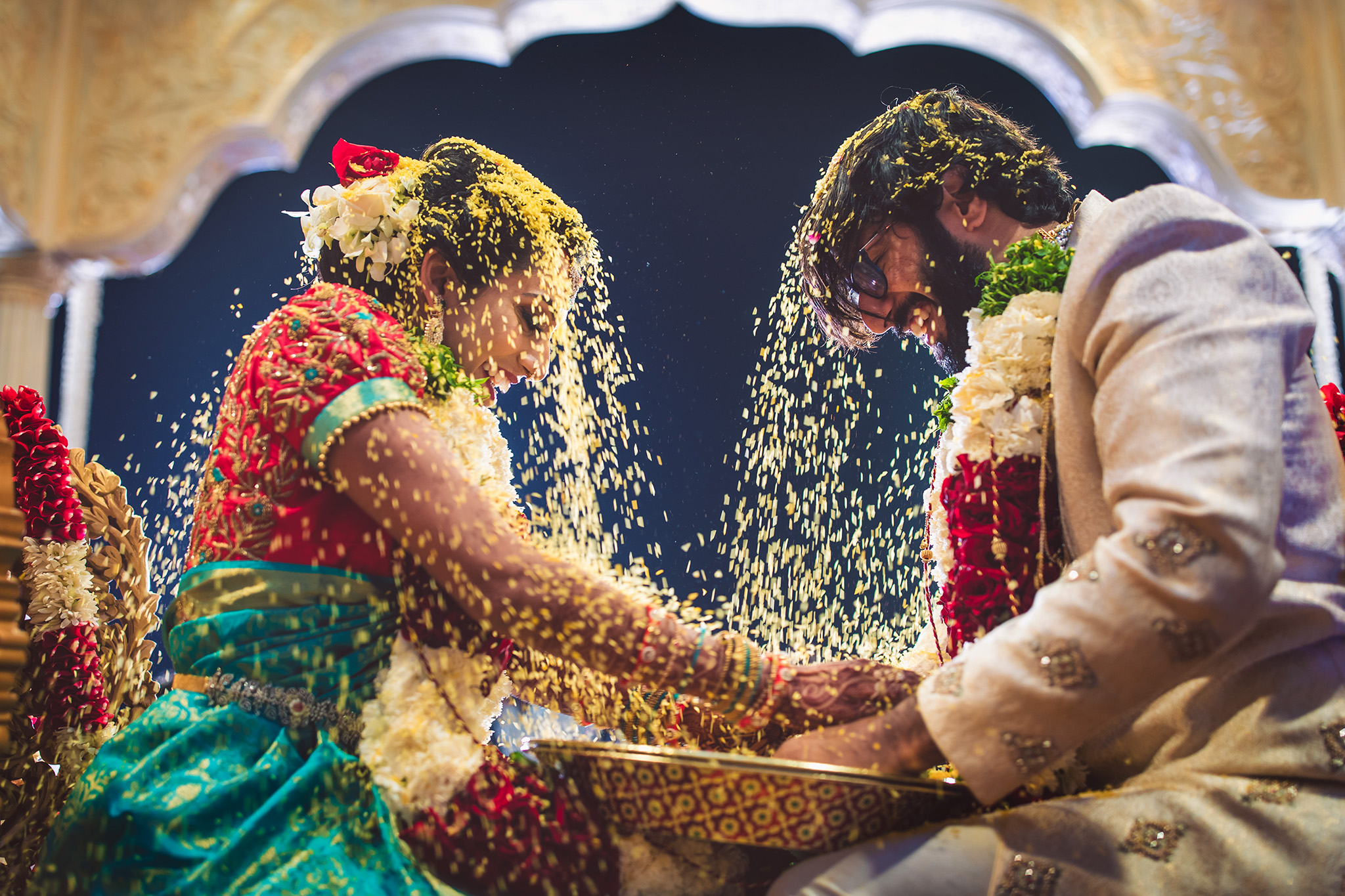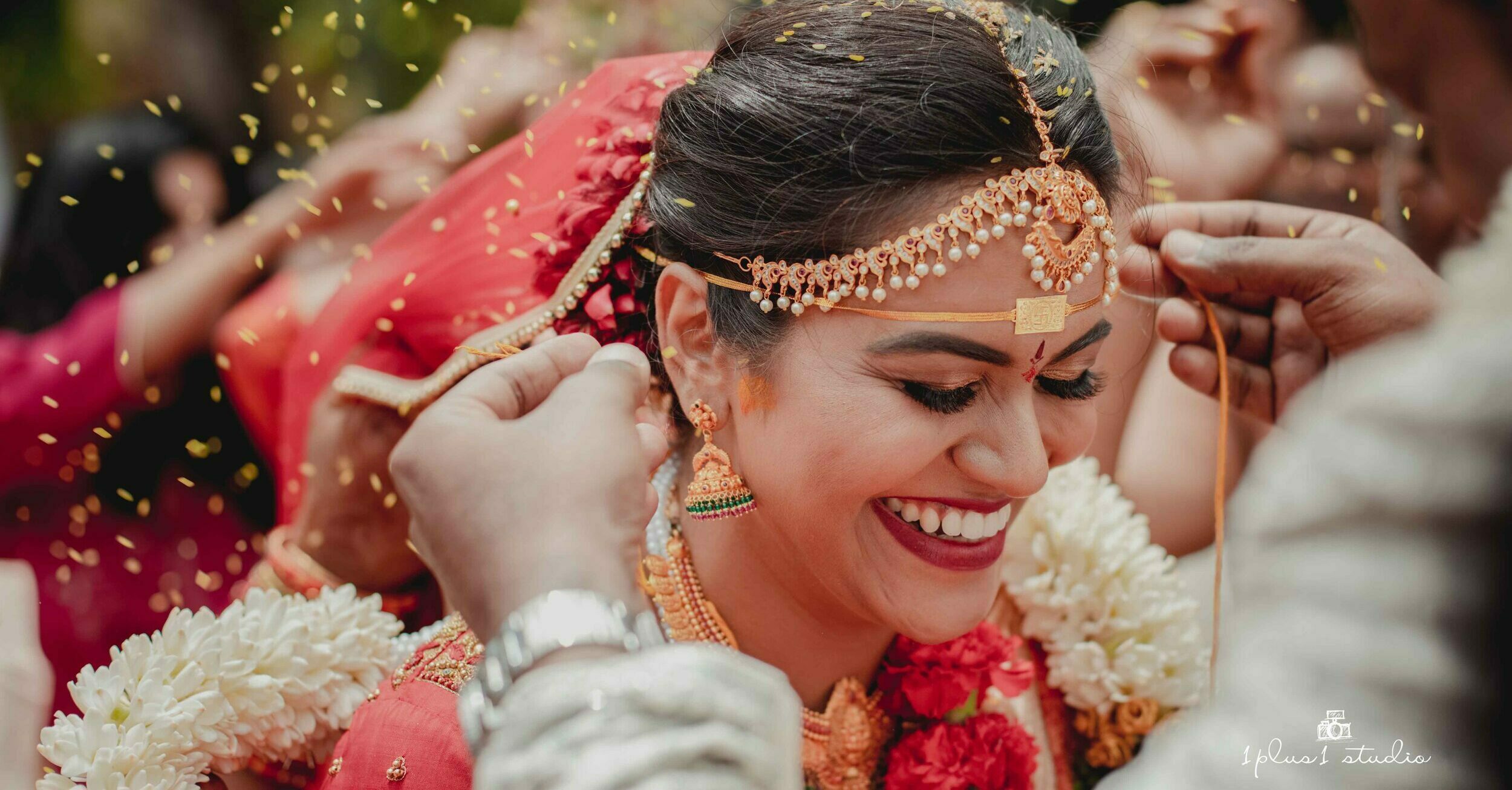What makes Indian weddings different from those of the other cultures?
It's the number of rituals and people involved.
It’s a fact. No matter which Indian state or culture you choose, no Indian wedding gets done in one day. Equal importance is given to literally all the wedding rituals as the actual wedding itself. Why? Because these rituals come with a deep meaning. When clicking fun filled Haldi pics with your girl gang, ever wondered why they smear Haldi all over the bride and groom? Or during your groovy Sangeet party nights, did you ask yourself what’s more to the night than dancing away in the name of celebration?
Here are some of the different Indian wedding rituals and their meanings decoded


The wedding invitation or the lagna patrika
Did you know that there is a whole ceremony dedicated to just writing your wedding invitation? Yes printing out the cards and using various designs is fun but the actual authentic wedding invitation writing ceremony is performed with great focus. The pandit selects an auspicious time to sit down with the family members of both sides and selects what words to write and how to frame the wedding invite.
During this ceremony both sides of the family exchange tamboolas or plates filled with clothes, ornaments and fruits. This is to signify that now both families are uniting and will be sharing their ups and downs together. The couple also exchanges written vows to set it in paper, before God, that they are going to get married. Some cultures may perform this along with the engagement or have another ceremony for the engagement or ‘sadaai’.
The haldi or the pithi
Most of you already know of this ceremony. The story behind this is to prepare the bride and groom for their nuptials. The bride and groom are covered in turmeric paste. Do you know that all the family members, in chronology, take turns and apply haldi onto the bride and bride groom? It’s a form of them passing on the well wishes and playing a part in making the bride or groom get ready for their weddings. So when you glow on your D-day, you will know that all your family and friends literally have a hand in it. Turmeric is the generic product with which our ancestors used to bath. It is said to bring out the glow of your skin and obviously it has many medical and cosmetic effects. Hence, the ritual.

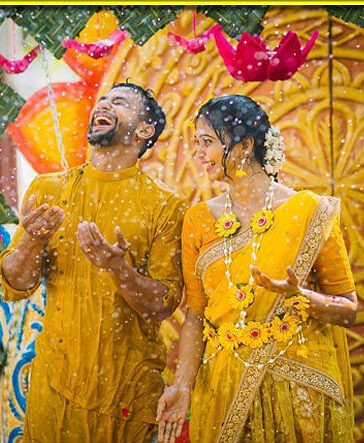
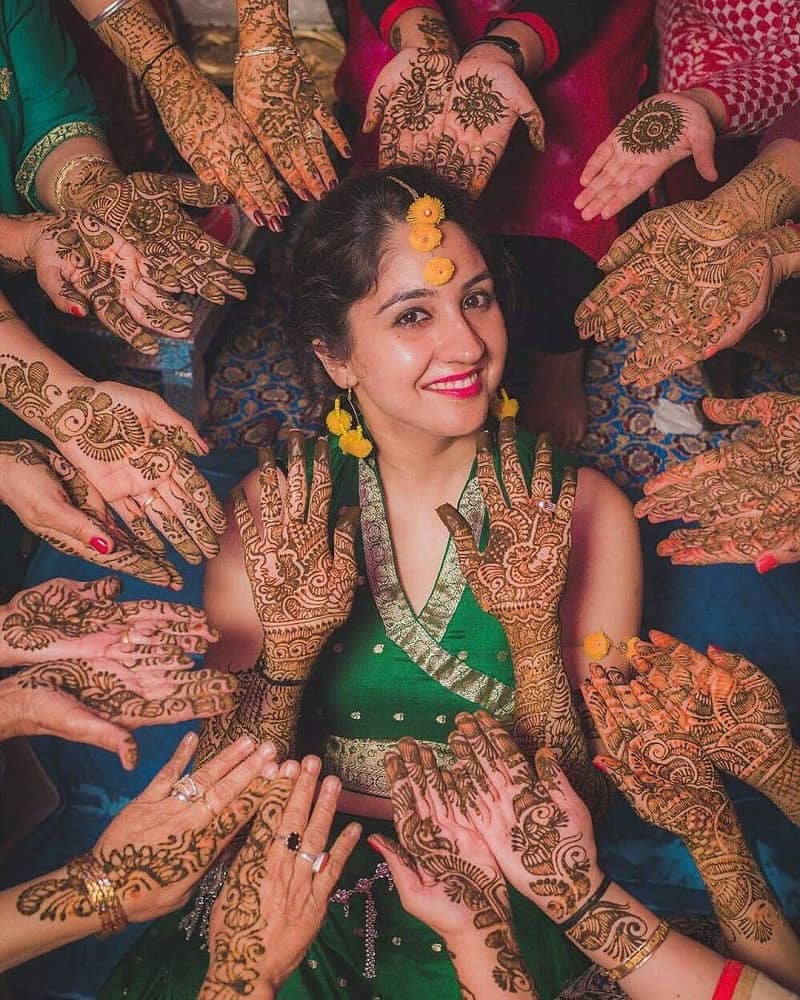

The mehendi
When a woman dresses up, it is said that the ones who gifted her the accessories play a huge part in her life. So when a bride gets the mehendi with her husband’s name on it, it is one way to let the world know who is the major person in her life now. There is also a sub ritual where the groom has to search for his name among the complex designs of mehendi. And it is said that if he finds it, he understands her love equally. Our Indians have evolved it into a fun ceremony with all the women of the marriage getting their hands full with mehendi and with the girls performing some graceful dance moves for the bride.
Sangeet
Weddings are joyous moments. So to celebrate the joy, both the brides and the groom’s families come together for a night filled with traditional dances, just letting loose and having fun. The Sanskrit word of Sangeet translates to singing together. Meaning when both the families of the wedding come together, everyone mingles , forgets their differences and just celebrates the bride and the bridegroom together. Traditional dances like garba performed on the Sangeet day are said to be a sort of calling for blessings for the couple.

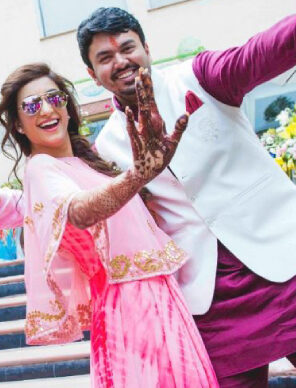

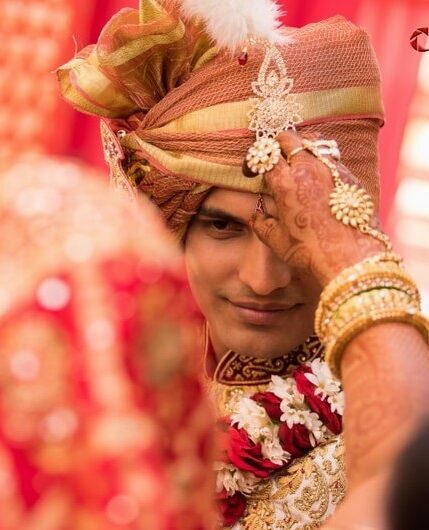
Var Yaatra and tilak
The groom sets off his journey to his bride. Traditionally, our ancestors used to have a huge procession where the groom and the whole family used to travel to the brides place on horses and palanquins, marry the bride there and take her back to their place. The last ones might clarify as viddai (saying goodbye) and baaraat. When the groom comes and stands in front of the brides house, or in our case the function hall, the bride’s mother puts tilak on the groom’s forehead. It is a small yet meaningful ritual between the groom and his soon to be mother in law.
These are just some of the pre-wedding rituals. The actual wedding ceremony has a huge list of rituals starting from kanya aagaman (entry of the bride), kanya daan (giving away the bride), var maala (exchanging garlands), phere (7 steps), sindhoor and the mangalsutra. Post wedding rituals are also many in number. The bride walks away from her house sprinkling rice over her head to give her house one last prosperity and both the families come together once more in the ultimate viddai, where the bride’s parents put their daughter’s hands in that of the in laws and ask them to take care of her.
So yeah the Indian wedding is very extensive. It is also super fun and super versatile. No two states have the same rituals. Every state and every culture has its own meaningful rituals that will take up many more articles than just this one.

